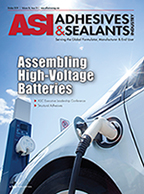The Adhesive and Sealant Council Inc. (ASC) recently announced it has submitted comments requesting the elimination of two of the new proposed material credits in the U.S. Green Building Council’s (USGBC) latest effort to revise its LEED 2012 building rating system. In particular, the ASC questioned the practicality of a new material resource credit that would measure U.S. products sold in North America by their ability to meet the qualifications set up by the European Chemicals Agency (ECHA) under the REACH program.
“It is ludicrous that the USGBC expects U.S. manufacturers to comply with a European regulatory program when companies are selling most of these products into North American building construction markets,” said Mark Collatz, director of Government Relations. “Aside from the fact that the USGBC apparently wants U.S. companies to be governed by European laws, from a practical perspective, under this proposal some adhesives and sealants that could be eliminated from credit consideration simply do not market their products into Europe.
“We have seen three drafts of USGBC LEED 2012 before the fourth revision, and none of the previous drafts mentioned REACH in any way, shape or form. With the inclusion of REACH within the fourth revision of LEED, it is clear that the process USGBC uses to draft revisions is either completely broken or advancing an EU-centric approach to science that does not include any input from industry. Only USGBC knows that answer, as the entire process is closed, does not allow for any formal input, and relies only on internal knowledge, even though the ultimate document that gets voted on is used by federal, state and local agencies, including the single largest builder of offices, the federal government’s General Services Administration.”
The ASC has also reportedly raised a red flag with a “Material Ingredient Listing” credit that would require building material manufacturers to list chemicals identified by the Clean Production Action’s Green Screen, which represents a variety of lists of chemicals with no rank of specific priorities of concern, and that was developed without industry input.
For additional information, visit www.ascouncil.org.


